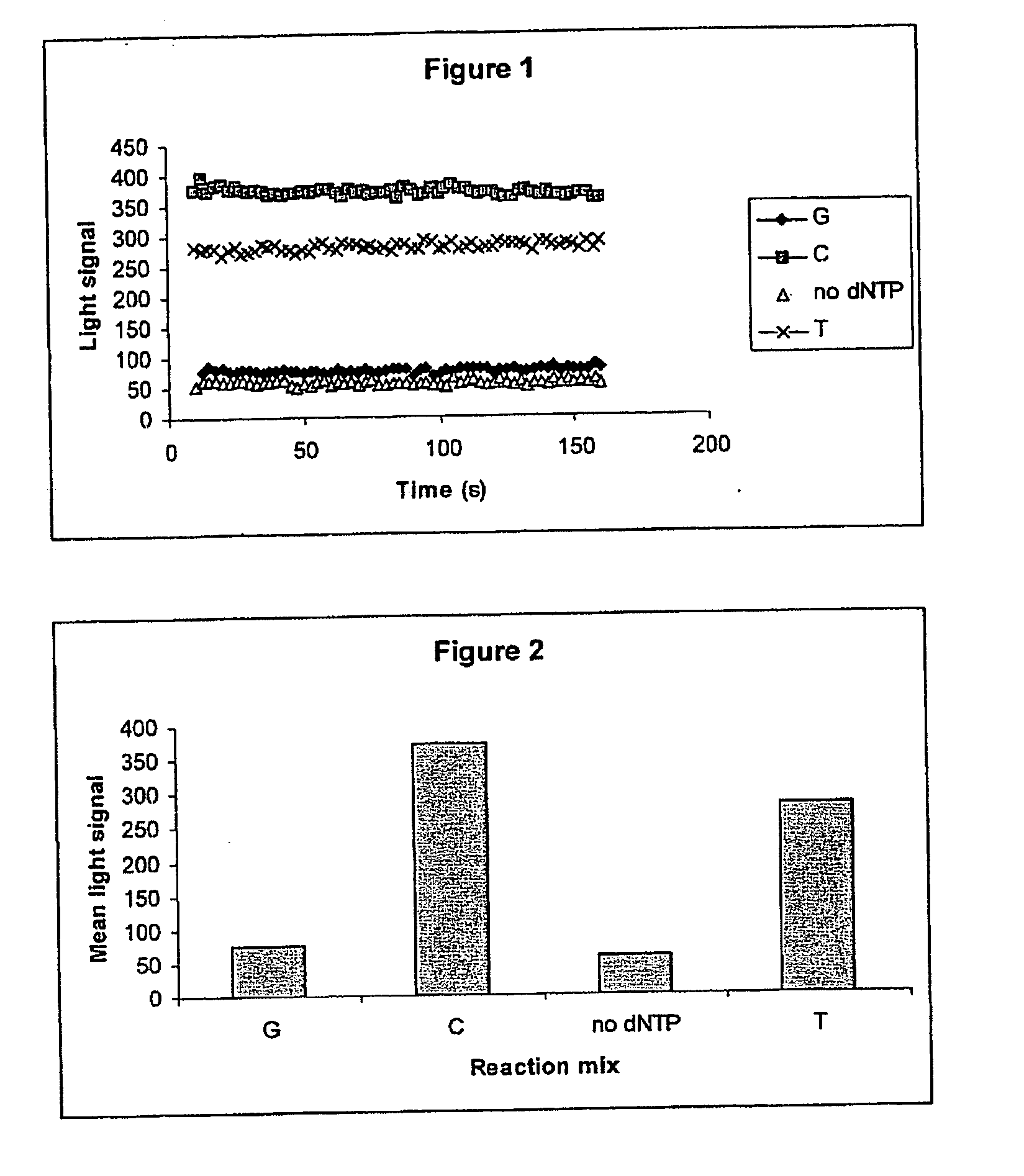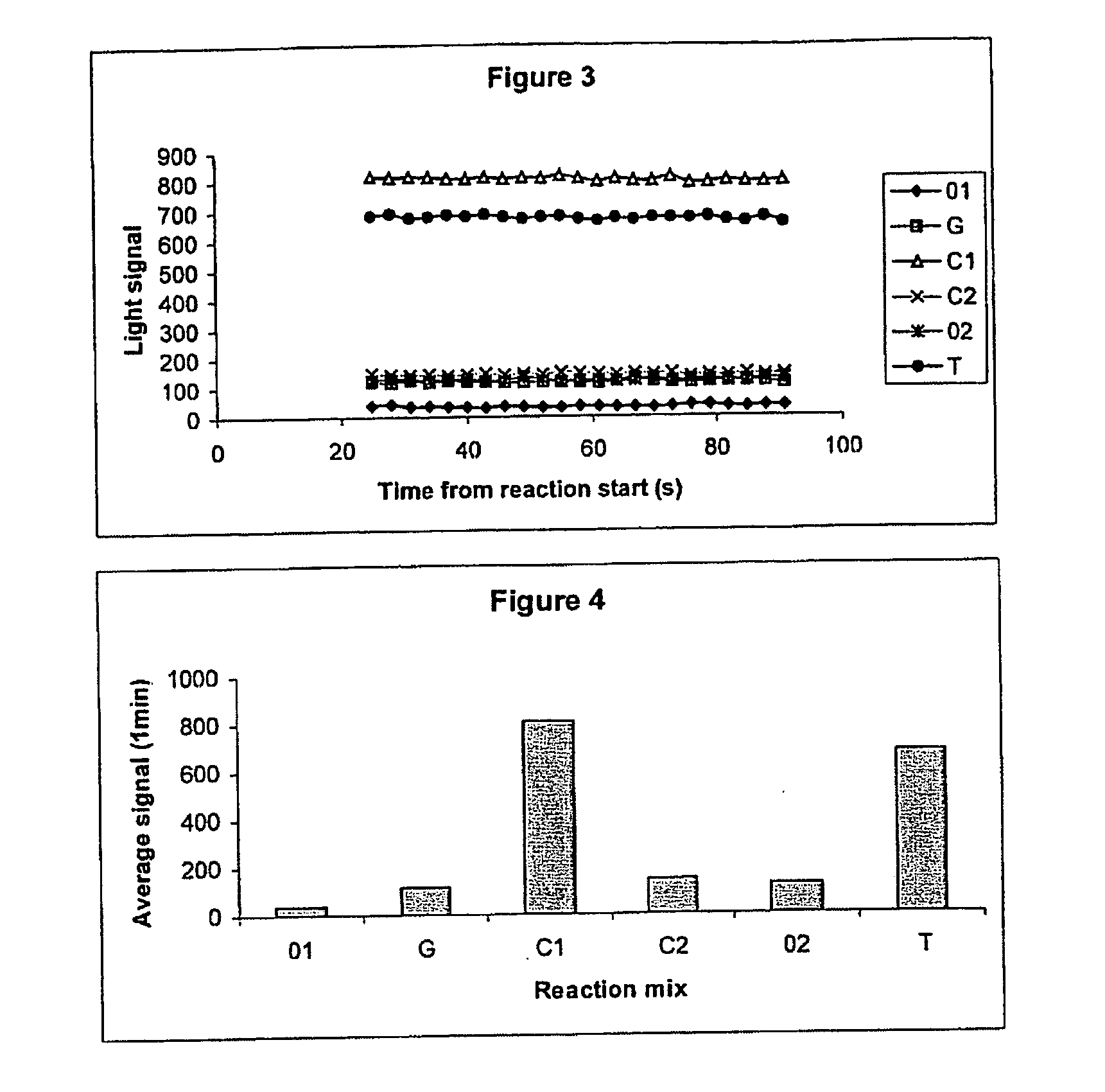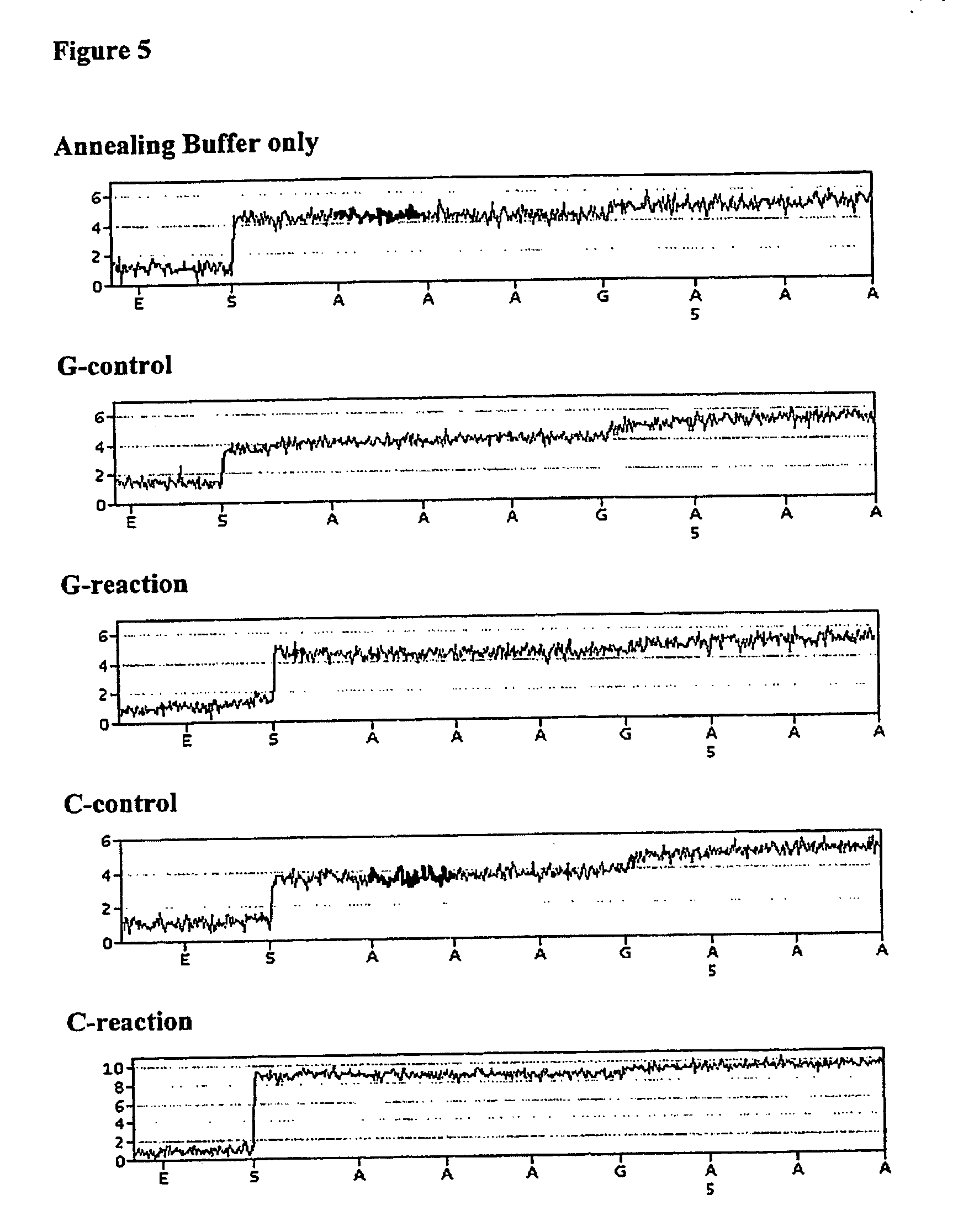Method for sequencing-by-synthesis
a technology of apyrase and apyrase, which is applied in the field of tubular members, can solve the problems of more unstable apyrase preparations, limited methods, and problems, and achieve the effect of facilitating the removal of apyrase to another environmen
- Summary
- Abstract
- Description
- Claims
- Application Information
AI Technical Summary
Benefits of technology
Problems solved by technology
Method used
Image
Examples
example 1
In situ Pyrosequencing Reaction with Real-time Detection
[0131] Oligonucleotides used were as follows:
(SEQ ID NO:2)NUSPT:gtaaaacgacggccagtctgacgaattccagc(SEQ ID NO:3)E3PN20bcaacattttgctgccggtcagactgcttaaggtcg-biotin
[0132] The expected sequence from this primer / template combination is shown underlined.
[0133] The primer, NUSPT, was annealed to the template, E3PN20b by mixing 6 pmoles of primer with 2 pmoles of template in 10 μL Annealing Buffer (20 mM Tris-acetate, 5 mM MgAc2, pH 7.6) and incubating for 5 minutes at 80° C. followed by cooling to room temperature. An additional 20 μL of Annealing Buffer was added together with 30 μL of Binding Buffer (10 mM Tris-HCl, 2 M NaCl, 1 mM EDTA, 0.1% Tween-20). AffiniTip™ Step 20 (containing a filter with immobilised streptavidin; Hydros, Inc. USA) was prepared by washing 5 times with 200 μL Annealing Buffer. The template / primer complex was then captured on an AffiniTip by repeated aspiration and ejection over a 5 minute period, using a Ep...
example 2
[0134] Detection of Signal After Election of Reaction Mix The primer NUSPT was annealed to the template E3PN20b, and immobilised on an AffiniTip™ Strep 20 as described in Example 1. The reaction mix, in a volume of 50 μL was then aspirated into the tip, passed through the filter by pulsing with the pipette for 20 seconds before being ejected into a clear plastic well placed above the CCD camera. The order of reaction mixes was as follows:
01No dNTP, to test for a stable baselineGincorrect dNTP, no incorporation expectedC1correct dNTPC2correct dNTP, no incorporation expected if C1 gavecomplete extension02no dNTP, to test for a stable baselineTcorrect dNTP
[0135] The signal was then monitored for 1 minute. The filter was washed between reaction mixes as in Example 1.
[0136] The results are shown in FIG. 3 (real-time measurement) and FIG. 4 (mean light output). Again, stable signals were obtained and the expected signals were obtained for correct dNTPs (C and T) and controls (01, G, C2...
example 3
Primer Extension in Tip and PPi Detection in External Well; Including Steps for Preparation of Single-stranded DNA (NT060:5 p 27)
[0137] Oligonucleotides used were as follows:
(SEQ ID NO:2)NUSPT:gtaaaacgacggccagtctgacgaattccagc(SEQ ID NO: 3)E3PN20bcaacattttgctgccggtcagactgcttaaggtcg-biotin
[0138] The expected sequence from this primer / template combination is shown underlined. AffiniTip™ Strep 20 was prepared by washing 5 times with 200 μL Annealing Buffer. The biotinylated template E3PN19b was bound to the filter in the AffiniTip by aspirating and dispensing several times 4 pmoles of E3PN20b in 30 μL Annealing Buffer and 30 μL Binding Buffer, for 5 minutes at room temperature. The bound oligonucleotide was then exposed to Denaturing Solution (0.2 M NaOH), which is designed to remove the non-bound strand of double-stranded DNA, for 2 minutes, followed by washing once with Denaturing Solution, 5 times with Washing Buffer (20 mM Tris-acetate, pH 7.6), and 3 times with Annealing Buffer...
PUM
| Property | Measurement | Unit |
|---|---|---|
| transparency | aaaaa | aaaaa |
| transparency | aaaaa | aaaaa |
| transparency | aaaaa | aaaaa |
Abstract
Description
Claims
Application Information
 Login to View More
Login to View More - R&D
- Intellectual Property
- Life Sciences
- Materials
- Tech Scout
- Unparalleled Data Quality
- Higher Quality Content
- 60% Fewer Hallucinations
Browse by: Latest US Patents, China's latest patents, Technical Efficacy Thesaurus, Application Domain, Technology Topic, Popular Technical Reports.
© 2025 PatSnap. All rights reserved.Legal|Privacy policy|Modern Slavery Act Transparency Statement|Sitemap|About US| Contact US: help@patsnap.com



